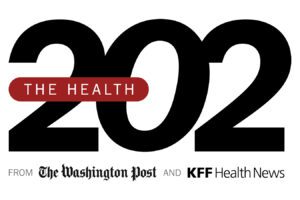How Medicare Advantage Plans Can Support The United States' Reinvestment In Health – Health Affairs

The Build Back Better bill now being considered by Congress has numerous provisions that could improve the health of Americans in ways health care alone never can. Yet, as 2021 closes, the legislation faces an uncertain future, in significant part because of concern about its costs and objections from affected industries. The United States’ health insurance plans, if they act quickly, with a good dose of vision, generosity, and initiative, can demonstrate how the private sector can help Congress make difficult decisions about investments for America’s health. They have an opportunity to lead.
Build Back Better Act: Moving From Repair To Prevention
America’s health care providers have performed heroic service throughout the COVID-19 epidemic, and our health care system has been effective and resilient. But we have seen as never before that health care, mostly, is a repair shop—trying to reverse or mitigate damage to mental and physical health whose causes are far from hospitals and physicians’ offices. The true causes of illness, injury, and disability lie in social structures, community conditions, and personal choices. It is, of course, important to assure that every person can receive effective preventive care. But the greater leverage to make us a healthy nation rests in improving early childhood experiences, education, workplace conditions, elder care, and community infrastructures for food security, as well as ensuring stable housing, transportation, recreation, and racial and socioeconomic equity.
The problem is that traditionally in the US, health care—the repair shop—gets so much money that too little is left for addressing the underlying drivers of health. That is different from similar European countries, which achieve a far better balance and, as a result, have much better health status than we do. Social services and health care spending data from 16 European countries show that they spend twice as much of gross domestic product, 24 percent, on publicly funded social services as they do for health care, at 11 percent. The US spends about the same on both, with social services receiving 19 percent and health care 17 percent (increasing to 19.7 percent in 2020). That is one reason why we are a sicker nation than others of equal wealth. Life expectancy in the US is now two years shorter than the EU on average and has been diverging from that of comparable countries over the past 35 years. Health care accounts for 20 percent of the difference in health status of populations while social determinants account for 80 percent. America’s much lower ratio of social to health care spending explains why we get so much less value for our health care expenditures than do other advanced nations. We are not buying health; we are buying repair.
The Build Back Better bill, in that regard, is largely a health bill. The House bill that was passed into the Senate’s hands proposes investments in many of the community and societal supports that create health. It is also an equity bill because, while social influences on health affect everyone, they are distributed differently among racial, ethnic, and socioeconomic groups, and they disproportionately negatively affect poor, non-White individuals, who pay a price in shorter lives. These inequities are largely a function of location. We might well refer to ZIP code as the “Fifth Vital Sign,” joining blood pressure, pulse, breathing rate, and temperature as correlates of health status. In Detroit, Michigan, people living on the wrong side of 8 Mile Road have a life expectancy 15 years shorter than their more advantaged neighbors. Between the Chicago Loop and West Chicago, the difference is 16 years. Health inequities that big exist in most US cities and many rural communities across the country.
None of this is news. Especially over the past five years, leaders in all sectors of the health care industry have loudly endorsed the importance of addressing the true causes of illness and health. America’s accelerated awakening over the past 18 months, following George Floyd’s murder and with the asymmetrical burden of COVID-19, has led to a better understanding of structural racism as a driver of inequities in health and other conditions of life, and of social determinants as causal mediators. As a result, most health care associations—such as America’s Health Insurance Plans, the Better Medicare Alliance, the American Hospital Association, and the American Medical Association—along with multiple health systems and health insurers have talked about the importance of addressing social determinants of health, with many publicly pledging strategic attention and sizeable investments. But redressing the imbalance in spending in the US will require more than pledges; it will require moving dollars out of health care spending and into social services.
In harmony with this surging awareness, the proposed Build Back Better legislation includes multiple social service investments, such as expanded childcare, family leave, and universal pre-K education, all of which have been demonstrated to significantly improve health. Congress is in an intense process of negotiating the size, duration, and scale of these programs, and trying to identify “pay-fors” in the form of either increased revenue, cutting back or eliminating some proposals, or improving the efficiency of other programs. Progress stalled in the last weeks of 2021, but Congress will likely take up the Build Back Better agenda again as 2022 dawns.
One enormous “pay-for” opportunity lies in the hands of the very insurers whose patterns of funding on the repair shop side of health investment have led to high incomes and profits in the Medicare Advantage (MA) program. The original intent behind privatizing Medicare through programs such as MA was to reduce Medicare costs while maintaining or improving quality of care. But, despite that intent, throughout nearly its entire life MA has always cost more than traditional Medicare. According to the Medicare Payment Advisory Commission (MedPAC), it has cost $143 billion more over the past 12 years. Much of this is due to “risk score gaming,” the processes two of us described in our Health Affairs Forefront blog posts MA Money Machine Part 1 and MA Money Machine Part 2. An updated estimate of the potential savings that could be harvested from fixing risk-adjustment-driven overpayments projects is $600 over the next eight years.
Despite this enormous opportunity, the current congressional search for “pay fors” for improved social services to achieve better health appears to have taken changes to MA risk adjustment off the table. Why? Because of the threat that the MA lobby would claim that any adjustment in risk payments would force them to increase premiums and decrease benefits for MA members. This places substantively low-hanging fruit out of reach politically.
Our Proposal
We have a simple proposal, which would allow MA plans to continue to offer their current supplemental benefits and premium levels but stop even more excessive spending in the future. The result would be a large opportunity for Congress to identify a source of funding—a pay-for—for a range of important improvements in social influences on health status in the next iteration of the Build Back Better bill. We ask MA leaders to propose and support this congressional action.
Here is how this would work.
Historically, MA plans’ efforts to obtain higher payments have raised MA risk scores annually by 1 percent more than the increase in traditional Medicare risk scores. A recent report by Richard Kronick and F. Michael Chua demonstrates that this rate of increase has doubled, to 2 percent annually, in the past two years. They estimate that MA scores have risen to 20 percent above the level that they would be if MA coding patterns were identical to those in traditional Medicare. These higher risk scores create substantial direct subsidies to MA plans, delivering higher Part A and Part B plan payments from the Centers for Medicare and Medicaid Services (CMS) as well as higher “rebates”—the additional payments by CMS that MA plans use either to reduce beneficiaries’ premiums or to provide extra benefits to beneficiaries. Rebates, now worth $140 per member per month on average, have almost doubled in the past five years consistent with rising risk scores. MedPAC has shown that risk scores, and resulting rebates, vary significantly across payers.
Recognizing the overpayments from risk-score gaming, Congress directed CMS to implement a Coding Intensity Factor (CIF) to adjust for differences between MA and traditional Medicare in patterns of coding. Congress required a minimum CIF of 5.9 percent by 2018 and directed CMS to implement a larger adjustment if empirically justified. Due largely to the political concerns described above, CMS has not increased the CIF above the statutory minimum.
Estimates of the effects of differential coding in 2019 vary from MedPAC’s 9 percent estimate to Kronick’s estimate of 20 percent. The magnitude of annual divergence is less in dispute: It has averaged 1 percent per year for the past decade, and, in Kronick’s analysis, it accelerated in 2018 and 2019. Because the estimates of future overpayments follow directly from the compounding effects of this annual increase, medical cost trend, the growing baby boomer population, and increased MA market share, a significant portion of the $600 billion estimate from Kronick and Chua lies in downstream years.
We believe that a fundamental redesign of Medicare risk adjustment methods is needed in the next few years. However, in the shorter run a straightforward interim policy, which we propose, is simply to leave in place the underlying currently accumulated difference between traditional Medicare and MA risk scores but to end the continuing divergence.
Congress could accomplish this by directing CMS to index all future CIF levels to negate the annual excess growth of the MA risk-adjustment factor over traditional Medicare. Savings that result from this policy will need to be estimated by the Congressional Budget Office, but our initial calculations using the Kronick-Chua model referenced above suggest this could produce a “pay-for” in the range of $100 – $200 billion over the next 10 years, with savings toward the lower end of the range if differential coding slows down considerably, toward the upper end if differential coding increases MA risk scores by 1 percent per year, and even larger savings if relative MA risk scores increase at 2 percent per year as they did in 2018 and 2019. Given the well-documented differences among contracts in coding intensity, CMS should be encouraged to explore contract-specific adjustments as well.
With this program, MA plans would continue to receive the current level of excess CMS revenue and rebates that support current benefits and member premiums. Those revenues would in effect be indexed henceforth to the underlying trend in spending in Parts A and B, thus supporting continuity in extra benefits and premiums at their current levels. Congressional leaders could present this proposal to MA leaders and ask for their support knowing that they could not reasonably claim that it would require them to reduce benefits or increase premiums.
MA plan leaders often speak, correctly, about how important it is to improve the social determinants of health. And indeed, some MA plans have instituted innovative programs to address those determinants. We believe the plans can and should be part of an honest public discussion about the need to replace the current risk adjustment system based on hierarchical condition categories. As two of us suggested in our earlier piece, Congress should direct CMS to replace the current risk-adjustment system with a system that accurately ensures that funds flow to the populations that really need them and preserves equity among all Medicare beneficiaries.
A fundamental fix will take time. Meanwhile, right now, during Congress’s immediate and further consideration of the Build Back Better legislation, MA leaders have a striking opportunity to demonstrate leadership to help move excess spending out of health care and into needed social services. It is time for the health plan industry to step forward and lead reinvestment to improve America’s health and social care systems. In the face of Congress’s difficulties in doing what many people acknowledge is the right thing, MA leaders can offer an example of visionary and constructive private-sector leadership, driven by the understanding that public investments in the long-term drivers of health is a prerequisite, not just for a healthy nation, but for long-term business success as well.





